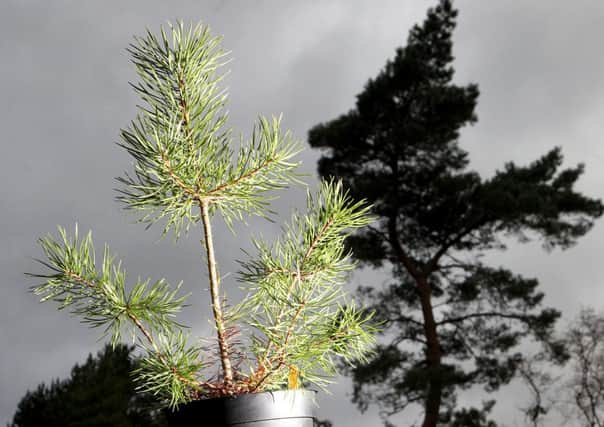Scots pine selected as Scotland’s national tree


Now the status of the Scots pine has been enshrined in the heritage books after it was officially unveiled as the country’s national tree.
Thousands of Scots backed the move in a nationwide consultation, which was launched after a petition at Holyrood first covered in The Scotsman.
Advertisement
Hide AdIt may be a symbolic move, but it is widely seen as important recognition for the country’s trees and woodland which face increasing threats from climate change, pests and diseases.
Carol Evans, director of the Woodland Trust charity, said: “I’m thrilled on behalf of the hundreds of our members and supporters who got involved with the consultation and responded to our survey last year.
“The official consultation found a very similar result to our poll, which demonstrates the iconic status that the species has in Scotland.
“We have a wide range of native trees that are vitally important to our landscape and environment, but clearly there’s something special about the Scots pine.”
The Scots pine is the most widely distributed conifer in the world, with a natural range that stretches from west Scotland to the Okhotsk Sea in eastern Siberia, and from north of the Arctic Circle in Scandinavia to southern Spain.
A recent three-month consultation to choose a national tree found that the Scots pine was the clear favourite, with more than 52 per cent (2,374) of all responses opting for the tree.
Advertisement
Hide AdIt proved far more popular than the rowan which received 15 per cent (687) of the responses. In third place came the holly, with 7 per cent (333).
Environment minister Paul Wheelhouse said: “Scotland’s trees, forests and woodlands are some of our greatest and most treasured natural assets. We are rightly proud of them because they help make Scotland the fantastic country that it is.
Advertisement
Hide Ad“The Scots pine was an obvious choice and certainly the people’s choice.”
The idea of a national tree of Scotland came from Alex Hamilton, a member of the public who brought his campaign to the Scottish Parliament through a petition and received cross-party support from MSPs.
Mr Hamilton said: “I look forward to this symbol of our beautiful and life-giving woodlands being embraced by all.”
The English oak, which can live for hundreds of years, is already widely seen as the national tree of England.
A funding package and a range of activities to help promote the national tree of Scotland symbol across the country is now being lined up by the Forestry Commission.
A formal designation of the national tree of Scotland will take place in the coming months, as part of events linked to the Year of Natural Scotland which ran throughout 2013.
Advertisement
Hide AdThe designation was welcomed by MSPs at Holyrood in a debate last night.
Nationalist Angus MacDonald said: “It’s clear that climate change is a serious issue that will give us many challenges in years to come and through initiatives like this one, Scotland can lead the way in reforestation.”
Advertisement
Hide AdLabour MSP Patricia Ferguson said it was “absolutely correct” that the Scots pine had been selected.
She said: “To me, the pine is the one that best symbolises Scotland and is most recognisable as being attached to and part of Scotland – and the world’s view of our country.”
GROWING A LEGEND
The Scots pine is steeped in Scotland’s culture and heritage and features in many of the poems and songs of Robert Burns.
It covers 130,000 hectares of the country and numbers 250 million individual trees. The tree, formally called Pinus sylvestris, also provides a home to some of Scotland’s most iconic species including pine martens, red squirrels, capercaillies and the wildcat.
The trees are so old in some places it’s hard to tell their true age, although some “Granny Pines” have been identified as 600 years old.
It is also one of the strongest softwoods and is widely used in construction and joinery. In this sense it is the cornerstone of the forestry industry which contributes £670 million a year to the Scottish economy and more than 30,000 jobs.
Advertisement
Hide AdIt comes in different shapes and colours and is the only native conifer grown commercially. The Scottish crossbill, the only bird to be found exclusively in the UK, is confined to the pine woods.
Pine is the generic name for the tree, but it is also known as the Scots fir, the guithais (Gaelic), ochtach (Old Irish) and giumais (Irish).
SEE ALSO